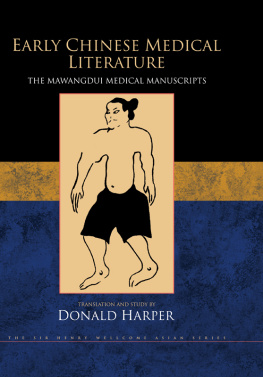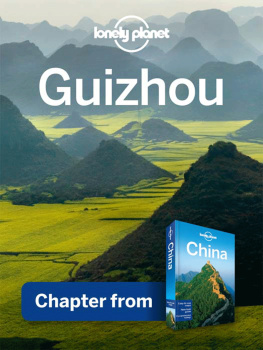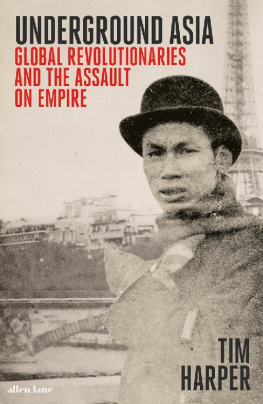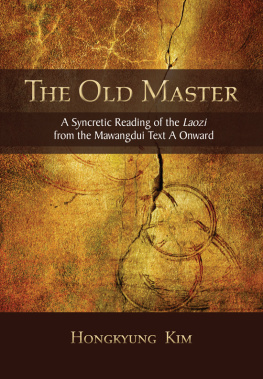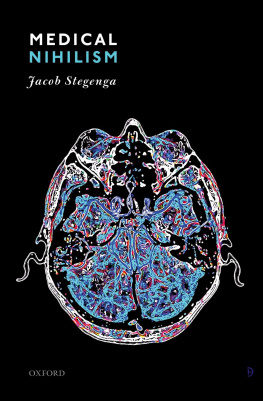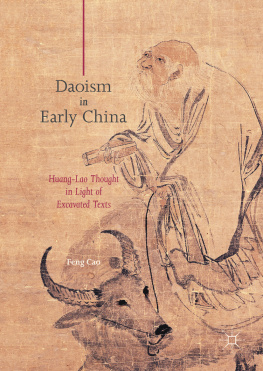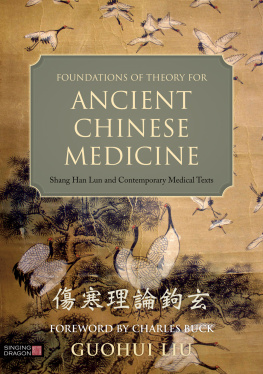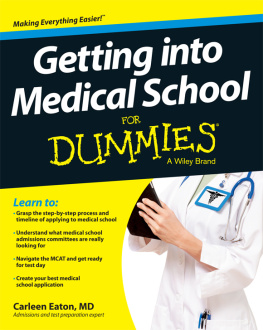Harper - Mawangdui yi shu yi zhu = Early Chinese medical literature: the Mawangdui medical manuscripts
Here you can read online Harper - Mawangdui yi shu yi zhu = Early Chinese medical literature: the Mawangdui medical manuscripts full text of the book (entire story) in english for free. Download pdf and epub, get meaning, cover and reviews about this ebook. City: London;New York;China;Mawangdui Site;Mawangdui Site (China, year: 2009, publisher: Taylor and Francis;Routledge, genre: Religion. Description of the work, (preface) as well as reviews are available. Best literature library LitArk.com created for fans of good reading and offers a wide selection of genres:
Romance novel
Science fiction
Adventure
Detective
Science
History
Home and family
Prose
Art
Politics
Computer
Non-fiction
Religion
Business
Children
Humor
Choose a favorite category and find really read worthwhile books. Enjoy immersion in the world of imagination, feel the emotions of the characters or learn something new for yourself, make an fascinating discovery.
- Book:Mawangdui yi shu yi zhu = Early Chinese medical literature: the Mawangdui medical manuscripts
- Author:
- Publisher:Taylor and Francis;Routledge
- Genre:
- Year:2009
- City:London;New York;China;Mawangdui Site;Mawangdui Site (China
- Rating:4 / 5
- Favourites:Add to favourites
- Your mark:
- 80
- 1
- 2
- 3
- 4
- 5
Mawangdui yi shu yi zhu = Early Chinese medical literature: the Mawangdui medical manuscripts: summary, description and annotation
We offer to read an annotation, description, summary or preface (depends on what the author of the book "Mawangdui yi shu yi zhu = Early Chinese medical literature: the Mawangdui medical manuscripts" wrote himself). If you haven't found the necessary information about the book — write in the comments, we will try to find it.
Harper: author's other books
Who wrote Mawangdui yi shu yi zhu = Early Chinese medical literature: the Mawangdui medical manuscripts? Find out the surname, the name of the author of the book and a list of all author's works by series.
Mawangdui yi shu yi zhu = Early Chinese medical literature: the Mawangdui medical manuscripts — read online for free the complete book (whole text) full work
Below is the text of the book, divided by pages. System saving the place of the last page read, allows you to conveniently read the book "Mawangdui yi shu yi zhu = Early Chinese medical literature: the Mawangdui medical manuscripts" online for free, without having to search again every time where you left off. Put a bookmark, and you can go to the page where you finished reading at any time.
Font size:
Interval:
Bookmark:
E ARLY C HINESE M EDICAL L ITERATURE

T HE S IR H ENRY W ELLCOME A SIAN S ERIES
Editors
Lawrence I. Conrad, London
Paul U. Unschuld, Mnchen
Dominik Wujastyk, London
Editorial Board
Ronald E. Emmerick, Hamburg
Donald J. Harper, Tucson
Lutz Richter-Bernburg, Leipzig
Already Published
Ibn al-Jazzr on Forgetfulness and its Treatment: Gerrit Bos
Early Chinese Medical Literature: Donald J. Harper
Forthcoming
Ibn al-Jazzr on Sexual Diseases and their Treatment: Gerrit Bos
Al-Kind on Weather-Forecasting: Gerrit Bos and Charles Burnett
A Soup for the Qan: Paul D. Buell and Eugene N. Anderson
Ibn al-Jazzr on Fevers: Gerrit Bos

E ARLY C HINESE M EDICAL L ITERATURE
The Mawangdui Medical Manuscripts
Translation and Study
by
DONALD J. HARPER

First published in 1998 by
Kegan Paul International Ltd
This edition first published in 2009 by
Routledge
2 Park Square, Milton Park, Abingdon, Oxon, OX14 4RN
Simultaneously published in the USA and Canada
by Routledge
270 Madison Avenue, New York, NY 10016
Routledge is an imprint of the Taylor & Francis Group, an informa business
Donald J. Harper 1998
Transferred to Digital Printing 2009
All rights reserved. No part of this book may be reprinted or reproduced or utilised in any form or by any electronic, mechanical, or other means, now known or hereafter invented, including photocopying and recording, or in any information storage or retrieval system, without permission in writing from the publishers.
British Library Cataloguing in Publication Data
A catalogue record for this book is available from the British Library
ISBN 10: 0-7103-0582-6 (hbk)
ISBN 13: 978-0-7103-0582-4 (hbk)
Publishers Note
The publisher has gone to great lengths to ensure the quality of this reprint but points out that some imperfections in the original copies may be apparent. The publisher has made every effort to contact original copyright holders and would welcome correspondence from those they have been unable to trace.
To the Memory of Edward H. Schafer (19131991)
C ONTENTS
FIGURES
PREFACE
I began work on the Mawangdui medical manuscripts in early 1977 when I examined partial transcriptions published in Wenwu 1975.6 and 1975.9. My 1982 dissertation is the product of the first stage of my manuscript research. At that time a reproduction of the original manuscripts was not yet published, transcriptions of several texts had not yet appeared in print, and most of the published transcriptions used simplified graphs. MWD, vol. 4, published in Beijing in 1985, provided a photographic reproduction of the manuscripts and a transcription of all texts in modern kaishu graphs. By 1986 I was gradually making my way through the as yet unseen texts and familiarizing myself with the original manuscripts (the physical relics as well as their script). While I was convinced that the manuscripts were a remarkable testament to early Chinese medicine, I was uncertain whether an annotated translation of the entire corpus would find a publisher. For a time I considered translating a selection of texts or writing a study based on the manuscripts. The decision to translate the entire corpus was made in the fall of 1990 while I was a guest at the Institute for the History of Medicine, Munich University. I am indebted to Professor Paul U. Unschuld, Director of the Institute, for encouraging me to undertake a complete translation; and for providing me with the ideal research environment in Munich as I began the task in earnest.
Professor Unschuld has continued to watch over the project at critical stages, from commenting on the work in progress to securing publication funds. I wish to offer heartfelt thanks to my friend and colleague for his enthusiastic and unstinting support. I am also grateful to Professor Li Xueqin, Director of the Institute of History, Chinese Academy of Social Sciences, Beijing. Professor Li is responsible for the final editing of the transcription in MWD, vol. 4, and has encouraged me to pursue research on the medical manuscripts since 1985 when we discussed the manuscripts in Beijing. At Professor Lis invitation I spent January to March 1993 at the Institute of History, during which time I consulted with Professor Li on matters related to the manuscripts. The memory of our meetings in his homelooking at the photographic reproduction of the manuscripts through a magnifying glass and weighing the evidence for determining the correct transcriptionremains fresh. During these meetings I learned important lessons in manuscript studies and the art of transcription. Professor Lis generosity continued through the final stages of translation in letters responding to further questions concerning the manuscripts.
In addition, I wish to thank Professor Ma Jixing of the Academy of Traditional Chinese Medicine (who was a member of the editorial committee that produced MWD, vol. 4) and Professor Qiu Xigui of Peking University for their assistance during my 1993 stay in Beijing. Professor Ma kindly presented me with a publishers advance copy of his own book on the Mawangdui medical manuscripts (Ma Jixing 1992) on the day before my departure from Beijing. A research fellowship from the Alexander von Humboldt Foundation and a Chiang Ching-kuo fellowship administered by the American Council of Learned Societies permitted me to spend most of the academic year 199091 in Munich. The Committee on Scholarly Communication with China awarded me a research grant to attend the International Symposium on Mawangdui Han Tombs in Changsha in August 1992 (at which time I was able to inspect the original medical manuscripts at the Hunan Provincial Museum) and to spend winter 1993 in Beijing. I thank the University of Arizona East Asian Studies Department for releasing me from teaching duties during Spring Semester 1993, permitting me to go to Beijing and then to make rapid progress on the translation after my return to Arizona. A grant from the University of Arizona College of Humanities enabled me to engage the services of Mr. Xu Datong, a graduate student at the University, to produce the excellent facsimiles of the manuscripts which appear in this book. Mr. Xu also wrote the Chinese title on the title page in script based on the Mawangdui medical manuscripts. The Alexander von Humboldt Foundation provided a publication grant for the preparation of the electronic layout, which has been skillfully executed by Bo and Christine Hu of Munich.
D.H.
June 1996
PROLEGOMENA
Introduction
Since the 1970s there has been a succession of manuscript discoveries in late-fourth to second century B.C. tombs in several regions of China, the provinces of Hubei and Hunan being particularly fertile ground for manuscripts. Han manuscripts later than the second century B.C. have also been discovered, but Warring States, Qin, and early Han manuscripts have been more numerous. It is evident that the manuscripts were selected from the book collections of the well-to-do tomb occupants; that is, they were not prepared solely as burial goods. Contemporary records are silent on the custom of book burial. Perhaps manuscripts were placed in tombs because they were intrinsically valuable objects that bespoke expertise and status, or because they were imbued with a magical efficacy that suited the underworld environment.used for manuscripts), but the manuscripts have experienced none of the vicissitudes of transmission that led to the loss of most ancient literature, or that recast the original form and content of a book in a new edition. When the manuscripts restore texts that were either lost or significantly altered in the course of transmission, their importance for new interpretations of early Chinese civilization is particularly great.
Next pageFont size:
Interval:
Bookmark:
Similar books «Mawangdui yi shu yi zhu = Early Chinese medical literature: the Mawangdui medical manuscripts»
Look at similar books to Mawangdui yi shu yi zhu = Early Chinese medical literature: the Mawangdui medical manuscripts. We have selected literature similar in name and meaning in the hope of providing readers with more options to find new, interesting, not yet read works.
Discussion, reviews of the book Mawangdui yi shu yi zhu = Early Chinese medical literature: the Mawangdui medical manuscripts and just readers' own opinions. Leave your comments, write what you think about the work, its meaning or the main characters. Specify what exactly you liked and what you didn't like, and why you think so.

